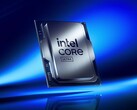In the latest Broken Silicon podcast, Tom from Moore’s Law Is Dead reveals new details about AMD’s upcoming RDNA 5 architecture, confirming a launch window between early and mid-2027 to compete with NVIDIA’s RTX 6090.
RDNA 5 features two dies: AT0, a data centre-first chip with 154 CUs, 36 GB GDDR7, and 380 W TDP. And AT2, a 264 mm² mainstream die with up to 70 CUs (64 for gaming), 12-18 GB GDDR7, and 192-bit bus. Tom says AT2 will deliver RTX 5080-class performance for around $500.
According to Tom, the AT2 GPU die will be used in both AMD’s next-gen Xbox console and mid-range desktop graphics cards. This shared use of silicon may offer AMD cost savings in development and manufacturing. RDNA 5 is expected to bring major gains in ray tracing and AI compute, marking AMD’s return to high-end GPUs after RDNA 4. The first cards, likely AT2-based, are expected in April 2027.
The podcast also confirms that more Strix Halo-based products are in the pipeline, including mini-PCs and thin laptops, giving AMD a strong position in the high-performance mobile PC space throughout 2025. Meanwhile, NVIDIA’s competing Arm-based N1X SoC, developed with MediaTek, has been delayed until mid-to-late 2026, with no clear launch timeline.
While early reports blamed Windows 12 readiness, Tom now attributes the delay to deeper challenges, including power efficiency issues and difficulty integrating MediaTek’s modem IP into a unified design. Even if N1X launches, it may arrive only in limited reference devices, likely missing the window to compete with AMD’s Strix Halo or Intel’s Lunar Lake.
The podcast also reveals that Intel’s restructuring under CEO Lip-Bu Tan may be more drastic than previously reported. According to Tom, internal sources now estimate 20–25% workforce reductions by the end of 2025, translating to over 20,000 layoffs, significantly higher than the previously floated 15% figure. Additionally, Intel’s Network & Edge (NEX) division was spun off not as part of a strategic pivot, but because no buyer could be found, leading the company to offload it as a shell entity for investor optics.
The podcast also claims that Diamond Rapids, Intel’s upcoming 256-core server CPU planned for 2025, may intentionally omit Hyper-Threading, not due to technical limitations but as a strategic shift toward efficiency over raw thread count. With no major CPU launches expected before 2026, Intel risks ceding further ground to AMD, whose Zen 6 EPYC chips are expected to retain SMT and deliver strong IPC and performance gains.
Separately, Nintendo may already be prototyping a Switch 2 OLED. Tom reports that a leaked mid-frame with a noticeably larger screen cutout surfaced on a Chinese marketplace, suggesting a larger display and a premium OLED variant that could launch sometime after the base Switch 2. The podcast touches on this and other hardware developments, making it worth a listen for the full context.






























